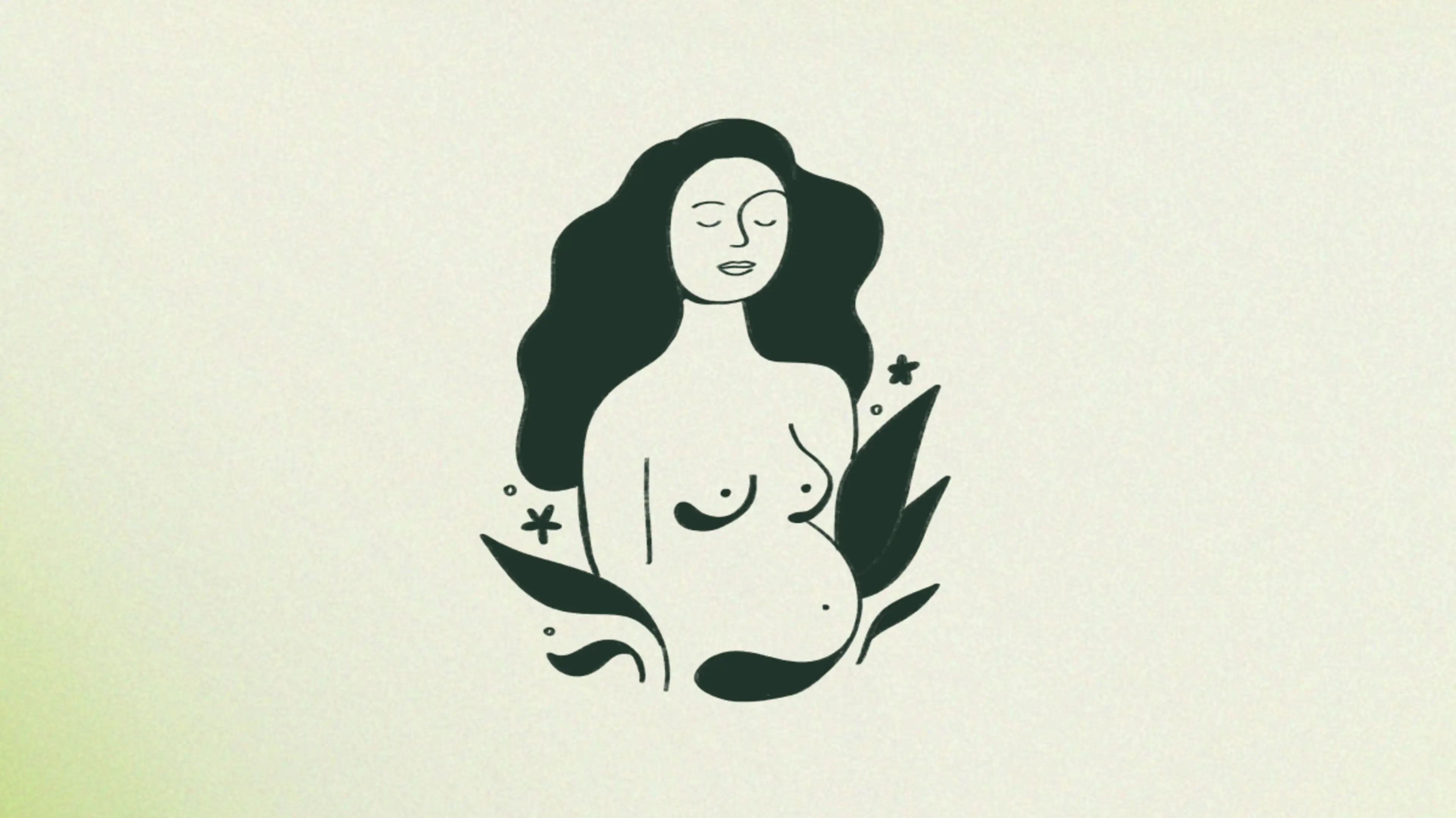TLDR: The pelvic floor plays an important function in your body, and even more so when you’re pregnant and postpartum. It goes through a lot when you have a baby, so we consulted an expert to explain what the pelvic floor does, how it changes in pregnancy, and how to take care of it during and after pregnancy.
Your body goes through a lot during pregnancy and postpartum, and you’ll learn a lot about body parts you likely never thought much about before pregnancy—including the pelvic floor. You might be unsure about where to turn for reliable information about pregnancy and the pelvic floor, from concerns about potential injuries to how to prepare your pelvic floor for childbirth.
We connected with Sonia Reiter1 , an occupational therapist specializing in pelvic floor therapy and a prenatal yoga instructor, to take a deep dive into everything you need to know about pregnancy and the pelvic floor.
What Is Pelvic Floor Anatomy?
Sonia Reiter: The pelvic floor is a group of muscles. You can picture them as a bowl inside the pelvis. Major attachments for these muscles include the pubic bone, the tailbone, and the sitz bones. The main functions of these muscles are the support of the pelvic organs—which are the uterus, bladder, and rectum—the containment and release of urine, feces, and gas, and sexual enjoyment and pleasure. The pelvic floor muscles also must relax and stretch to allow for vaginal birth.
In addition to the support of the pelvic organs, the pelvic floor supports your back and head and the whole body, too. When you need to lift something, walk, run, or jump, the pelvic floor is there for you to create support and a sense of buoyancy in the body.
How Does It Change During Pregnancy?
SR: During pregnancy, your pelvis does a lot of extra work because you’re supporting extra weight. You're growing a baby and you're growing another organ, the placenta. There is extra blood volume and amniotic fluid, and the pelvic floor supports all of that. Pregnancy and birth are big challenges for the pelvic floor: We are asking it to bear a lot of weight, to be very strong for nine months, and then relax and open up to let the baby out.
What Are Some Symptoms?
SR: A main symptom2 is leakage, the ‘sneeze pee’ or the ‘laugh pee,’ or having some leakage when you are doing anything that requires impact. Because the pelvic floor is under stress, sometimes the increased pressure from a laugh or a cough or throwing up from pregnancy nausea will lead to leakage or even full-on involuntary peeing. Other symptoms might include increased sensitivity, like pain with sex.
At What Point Is It Safe to Work with a Pelvic Floor Therapist?
SR: I would say the second or third trimester, as long as the client is cleared by their midwife or ob-gyn. During pregnancy, we might be working on improving coordination and full range of motion of the pelvic floor muscles. We will be addressing individual issues that the client is having, for example, if someone is having a lot of “sneeze pees.”
Sometimes people tell me their doctor said that incontinence is unavoidable during pregnancy, which I don’t think is an accurate thing to say. Sometimes pelvic floor therapy can resolve incontinence, or at least we see significant improvement even during pregnancy. We also may be doing a manual release of the muscles. The manual release work creates more space, relieves pain, and can help the client prepare for birth.
What At-Home Exercises Should I Do or Aovid?
SR: I am also a prenatal yoga teacher, so of course I think prenatal yoga is wonderful for pregnant women. It has a holistic approach to stretching and strengthening the body, which is wonderful, but more than that, the essence of yoga is about paying attention. Learning your body and how subtle shifts in alignment or amount of force or pacing can have a profound impact on your physical experience. Pregnancy is a time of constant change, and yoga offers you an opportunity to connect with yourself: body, mind, and spirit within a context of reverence and curiosity toward that constant change.
In terms of the nuts and bolts of moving or exercising while pregnant, I would say that instead of working to increase your range of motion, I think you should move your body to increase your range of pleasure. So often people say, 'I want to get out of my comfort zone or push myself harder.' I think pregnancy is when you really should and can find your comfort zone and sink into it. So that’s what I don’t recommend. Don’t push it to extremes, don’t put the body under more stress. Move to feel good, not because of some external idealized version of what someone else says you should be doing.
What Are Some Postpartum Pelvic Floor Issues or Injuries?
SR: The common pelvic floor issues [of] postpartum relate to the functions of the pelvic floor muscles. People may struggle with urinary or fecal incontinence or leaking; they may have issues with constipation or hemorrhoids. They may have pain with sex or more generalized pain in the pelvis with sitting, walking, or lifting. They may experience heaviness or a feeling of bulging in the vagina, which is likely pelvic organ prolapse.
This is when the pelvic organs move lower in the pelvis if the connective tissue that suspends them has been compromised. Many people experience tears or episiotomies during vaginal birth and that can lead to scar formation, which can cause pain or discomfort. All of these symptoms and problems can be helped with pelvic floor therapy.
Does Pelvic Floor Therapy Have Benefits C-section Healing?
SR: Absolutely. Anecdotally, I’ve seen that many people who have had a Cesarean birth have significant tension in their pelvic floors. Often these are people who are experiencing a lot of pain with sex and need our help to decrease that tightness and tone. In addition, scar care following a Cesarean is really important, and pelvic floor therapists are trained in those techniques.
Can Pelvic Floor Therapy Help with Childbirth?
SR: Yes, what a lot of people don’t know is that a pelvic floor therapist can help you practice for birth. We can teach you techniques, including effective breathing strategies, how to coordinate your abdominals and pelvic floor for effective pushing, and anatomical/physiological reasoning for why various positions may or may not serve you during your labor.
So, even if you don't have pelvic floor dysfunction, it might help you to have a pelvic floor therapy session before you give birth. Not only do you get a baseline for what's going on in your body, but you also get this education on how to have a more effective experience when you are birthing your baby. People leave these birth prep sessions feeling they’ve gone through a dress rehearsal for birth. You can see their increased confidence. These are the people I get emails from after they give birth, talking about how important our work together was.












